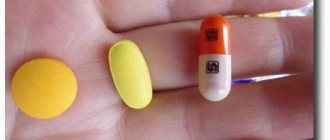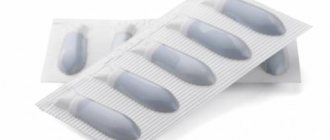What you should remember to correctly conduct a breath test for Helicobacter pylori
This test is analogous to a gastroscopic examination, but the patient does not have any unpleasant sensations: there is no need to swallow a probe, etc. For this, only a special plastic tube is used, into which you need to breathe. Inside it is filled with a special component that gives a reaction when Helicobacter bacteria appear.
It is important to note that this microorganism becomes dangerous to the human body only when the body’s defenses are reduced; it can provoke diseases such as stomach and duodenal ulcers, gastritis, benign and malignant tumors of the stomach, etc.
In order to obtain reliable research results, you need to properly prepare for the air test. The patient is recommended to avoid taking medications 14 days before diagnosis and to minimize the consumption of fried and unhealthy foods, including foods that increase gas formation.
Express test for the detection of Helicobacter pylori in stool
It is possible to test for Helicobacter pylori using stool. The feces of a person infected with the bacteria will contain an antigen to which the device reacts.
The test for detecting Helicobacter pylori in feces includes the following components:
- Test tube for collecting feces.
- Gloves.
- Solvent reagent.
- Instructions for use.
It should be taken into account that to increase the reliability of the results, preliminary preparation will be required.
It is not recommended to conduct the study earlier than a month after finishing taking antibiotics. 3 days before sampling, it is recommended to exclude from the menu foods that can increase gas formation. It is not recommended to take medications aimed at enhancing intestinal motility.
If there is blood or bile in the stool, this may distort the final result. Therefore, in case of intestinal pathologies, preference should be given to a rapid test for detecting Helicobacter pylori in the blood.
Stool is collected in any clean container; it is not necessary to sterilize it. About 125 g of feces are added to the test tube. You can use a cotton swab for this. The resulting material is filled with the solvent that comes with the test.
The sample is thoroughly shaken to obtain a homogeneous consistency. Leave the test tube at room temperature for 10 minutes. After the specified time, a few drops of the composition are applied to the indicator. It is left on the test for another 10 minutes. Now you can begin to evaluate the result.
If one line appears on the test, then the result is regarded as negative, and if two lines appear on the test, this indicates infection with Helicobacter pylori.
Naturally, a study conducted at home is not enough to prescribe treatment. However, if you receive a positive result, you must contact your doctor and inform him about the testing. The doctor will prescribe a comprehensive examination to the patient, based on the results of which a decision will be made on the need for therapy.
Principles of preparation
Preparation for the air helic test for pylori includes:
- Avoid taking antibiotics and antacids at least 14 days before the procedure.
- Quit drinking alcoholic beverages 72 hours in advance.
- You should not eat gas-forming foods 24 hours in advance.
- The last meal should be no later than 8 hours before the start of the study.
The breath test is performed on an empty stomach, and patients who smoke should give up cigarettes that day. Another condition is that it is not recommended to drink on the morning of the test.
If you properly prepare for a helic test, you will reduce the risk of receiving false results. It is very important to clean your mouth and teeth on the day of the examination, but it is better to avoid chewing gum.
Helicobacter pylori and peptic ulcer disease
Peptic ulcer disease develops in those patients who have an imbalance between the protective factors of the mucous membrane and aggressive influences. In addition to the well-known role of poor nutrition, smoking and alcohol abuse, factors of aggression include Helicobacter pylori infection, caused by the bacterium Helicobacter pylori. This microorganism is capable of producing a number of substances that disrupt the functioning of protective factors and cause damage to the mucous membrane of the stomach or duodenum.
Such an infection exists for a long time in the human gastrointestinal tract, and does not always manifest itself as symptoms of the disease. However, against the background of additional exposure to damaging factors, peptic ulcer disease may develop.
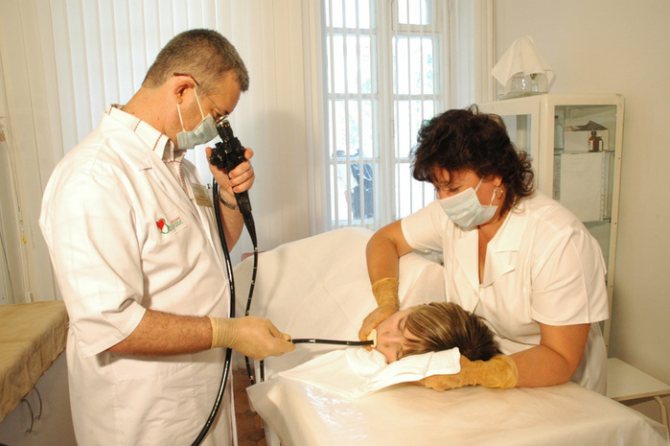
A person becomes infected through nutritional means, i.e. in connection with eating food, using poorly washed dishes, etc. The number of carriers of this bacterium in the human population is more than 50%.
To treat Helicobacter pylori infection, special therapy is used, including: two antibacterial drugs (Amoxicillin, etc.), a proton pump inhibitor (Omeprazole, Rabeprazole) and an enveloping agent (Maalox, etc.).
Why do they take a biopsy during FGDS?
A biopsy or collection of biological tissue is considered a very informative analysis when it is necessary to establish the nature of cellular changes. In gastroenterology, biopsy during gastroscopy plays a major role in the diagnosis of various pathological processes:
- benign neoplasms;
- malignant neoplasms in the early stages of development;
- inflammatory processes.
The main difference between this analysis of the internal gastric lining is point studies, since a biopsy is taken only from lesions that have undergone unfavorable changes. The obtained material is examined through various analyses:
- microscopic;
- histological;
- cytological.
In a word, a comprehensive check of the biopsy (material taken during FGDS) provides the doctor with more detailed and detailed information about the condition of the mucous membranes of the digestive tract.
Important! A biopsy taken during gastroscopy makes it possible to make a differentiated diagnosis, that is, within the framework of one study, to determine the true source of unpleasant symptoms indicating Helicobacter pylori infection, a malignant tumor or polyposis.
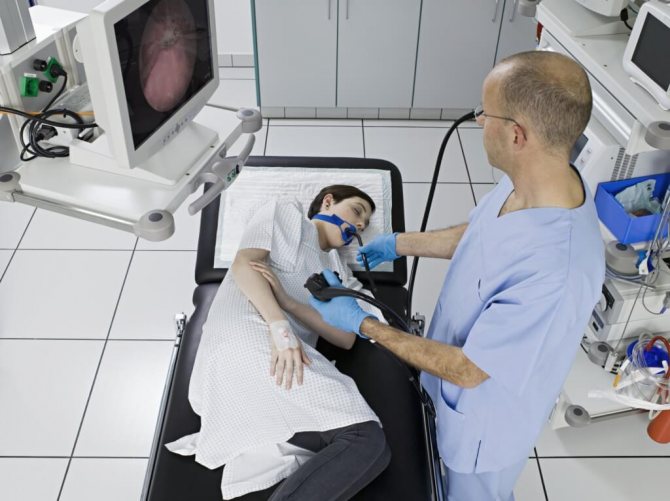
Technique
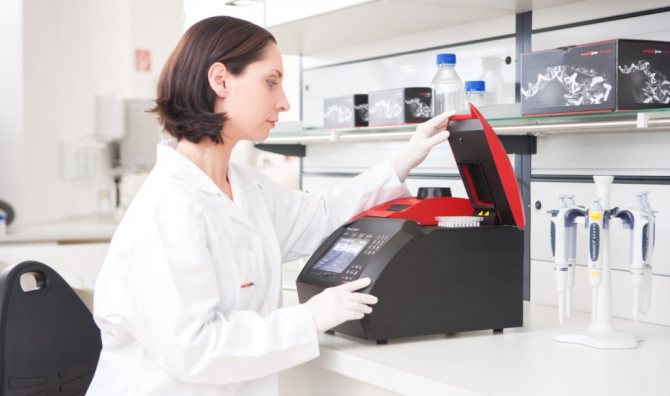
This technique is based on sensitivity to urease (if it increases, we can talk about the proliferation of pathogenic microflora in the stomach). The patient breathes continuously for 2-3 minutes (an hourglass is used to control time). It is very important that the inhalations and exhalations are smooth and not intermittent. After this, the patient is given a carbamide solution to drink and breathing movements are again carried out into the tube. At the end of the time, the doctor notes the level of the indicator and compares it with the previous one. The result is displayed immediately as a percentage.
During the procedure, you need to carefully ensure that saliva does not get inside the tube. In order to make swallowing movements, it is recommended to remove the tube from the oral cavity for a few seconds. If, however, it was not possible to contain the saliva and it entered the analyzer tube, then the study is stopped and a repeat test is ordered after 60 minutes.
The essence of the method
The test is based on the ability of the Helicobacter pylori bacterium to produce the enzyme urease, which breaks down urea into ammonia and carbon dioxide. Helpil systems are disposable discs impregnated with chemical reagents: urea and acid indicator. Tissue samples obtained during endoscopic examination are placed on the dry surface of the disc. In the presence of bacteria, urea decomposes within 3 minutes, and the resulting carbon dioxide turns the indicator blue.
Advantages and disadvantages of the breathing procedure
Helic test has a number of advantages over others:
- ease of use;
- high reliability of results;
- there is no need to use a probe, as, for example, in the case of gastroscopy.
The only drawback is its high cost, so the helic test is not carried out in all medical institutions. Today two types are popular:
- carbon, which requires special preparation. To carry it out, special equipment is required;
- ammonium It is a rapid test that helps not only to diagnose the presence of pathogenic microorganisms, but also to identify the degree of their reproduction.
In order to get completely reliable results, it is better to use carbon systems, despite the fact that they are more expensive compared to others.
Thus, diseases of the upper gastrointestinal tract can be provoked by pathogenic microflora, in particular Helicobacter pylori. They are often the main causative agents of gastritis or ulcerative formations in the stomach and duodenum. To identify them, you need to conduct a special breathing helic test. It is very important to properly prepare for it; this will increase the reliability of the results obtained. If the test results are positive, the patient is prescribed special antibacterial therapy.
Express test for detecting Helicobacter pylori in the blood
A visit to a laboratory or other medical facility for testing to detect Helicobacter pylori is not required. You can purchase the test at a pharmacy. Doing it at home is not at all difficult.
The test allows you to detect antibodies to Helicobacter pylori in whole blood.
The tests most often include:
- Indicator tablet, which is packaged in an individual vacuum bag.
- Reagent for diluting the obtained blood sample.
- Pipette for adding blood to the tablet.
- Scarifier suitable for single use.
- Antiseptic wipe.
- Instructions for use.
If the test was stored in the refrigerator, then it must be kept at room temperature for 20 minutes before use. Then the test is removed from the packaging and laid out on a dry, clean and flat surface. The indicator window should be located at the top.
Hands should be washed with soap, after which the package with a disposable antiseptic wipe should be opened and the finger from which the blood will be drawn is treated with it.
The next step is to open the scarifier. With its help, a small puncture is made on the tip of the finger to allow blood to flow out.
Blood is drawn into a pipette. One drop of liquid is enough to perform the test. It is introduced into the round window located on the express test tablet. After the blood is in the indicator, 2 drops of the reagent are added to it. Leave the test for 15 minutes, after which you can evaluate the result.
A line appears in the test area of the tablet. If there is only one line, then the person is not infected with Helicobacter pylori. If there are two lines, then the result can be considered positive. Thus, the total testing time does not exceed 20 minutes.


